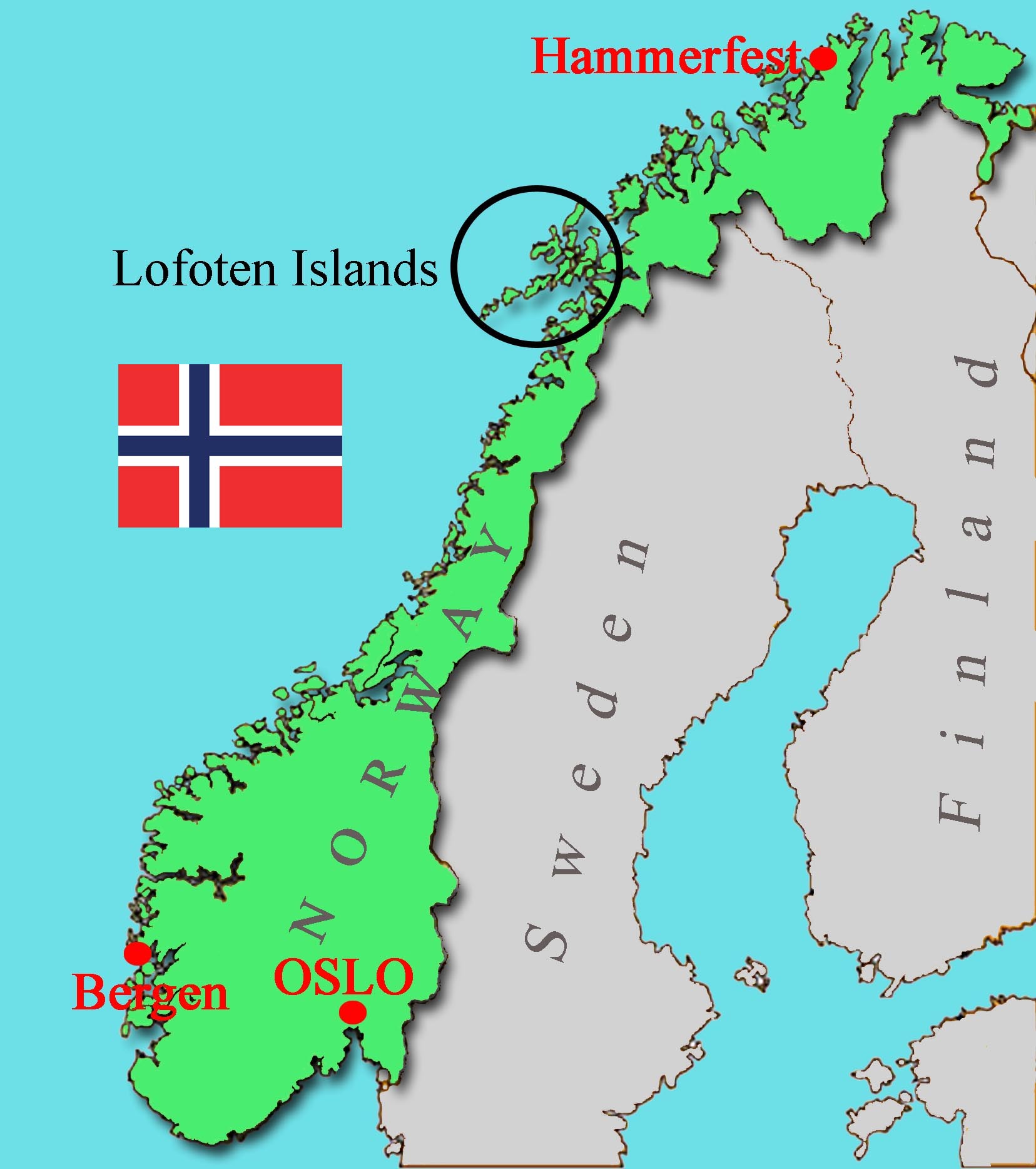APRIL 3, 2022 – If you run your finger on the map along the fjords of Norway from Bergen northward, way past Trondheim and beyond the Arctic Circle, you’ll come to Bøda. Facing it to the north and arcing into the Norwegian Sea are the spectacular Lofoten Islands. From the largest and most rugged— Austvågøya—the islands diminish in size and elevation to the last inhabited one, named Røst. If I nearly lost my life on Austvågøya, I found an abundance of fish beyond Røst.
To reach Svolvaer, the port of Austvågøya, I caught a small freighter out of Bøda. Within walking distance of the island wharf was a perfect hostel, where I met several Swedes in search of island trails leading straight up the rugged island peaks. I joined one of the hikers, Göran, who seemed to know the most about the area.
Before long, our course led to the very edge of the earth—with no way back. In posts on 4/10-11/2020 (https://wordpress.com/posts/writemakesmight.net?s=April+10%2C+2020 and https://wordpress.com/posts/writemakesmight.net?s=April+11%2C+2020 ) I described the details of our brush with gravity off a slippery trail barely wide enough for goat hooves. One misstep and you were a skydiver without a parachute.
Tiny Røst, by contrast, was flatter than a flounder but offered spectacular scenery. In a letter home, I described a highlight of the Grand Odyssey:
“Røst is a fishing community of 800 inhabitants, all very prosperous. It’s devoid of all commercialism, and the only facility for outsiders is a small, relatively unknown youth hostel. The only guests are Swedes, Norwegians, and an occasional German . . .
“On one particularly bright, sunny day, I joined three of the six hostel guests on a fishing trip out in the Norwegian Sea in the direction of Greenland . . . Our boat was less than 10 meters long, but it was very seaworthy and maneuverable craft. Once we’d chugged beyond the protection of the islands, the seas got especially heavy. The boat—Ferna—pitched bow to stern and port to starboard. Waves washed over the deck and the ocean spray soaked our hands and faces (one doesn’t venture out in those waters without wearing adequate raingear).
“Using sonar, the skipper tracked a school of colefish, and after determining their numbers and direction, he cut the throttle. Next, we lowered our lines—two kilos of weight, 10 meters of line, and two dozen hooks spaced 30 cm apart. All we had to do was drop in the line and crank it right back again. One of us would crank while the other would unhook the fish—each about two kilos. After landing a barrel of fish, we chugged (and splashed) back to port. After tying up, our friendly skipper, Andreas, showed us how cut, clean, and filet our catch . . . I became rather efficient at de-capitating, gutting, and fileting. The scraps we threw to the gulls that swarmed by the score. It was all such a picturesque scene—the sea, the boats, the boathouses, the birds, the fish, the fishermen, the drying racks. And I wasn’t just looking on—I was part of the scene itself!”
(Remember to subscribe to this blog and receive notifications of new posts by email.)
© 2022 by Eric Nilsson
